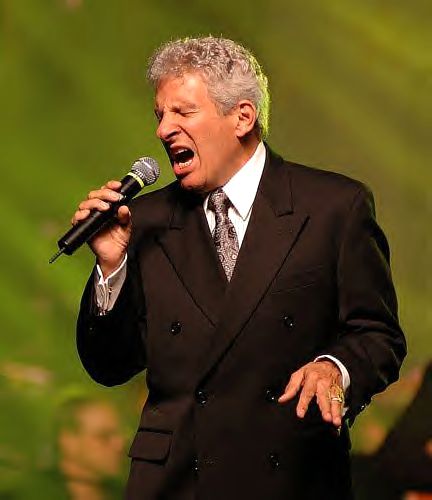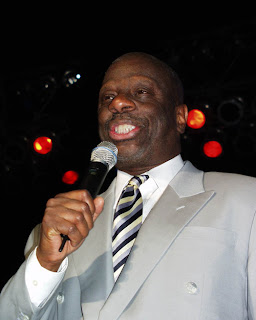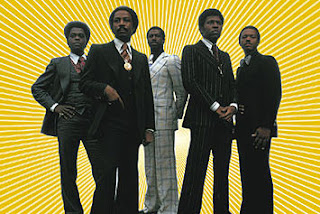... she was 63-years-old when she passed away.
Known as the "The little girl with the big voice," Rosemary Timothy Yuro, was born in Chicago, Illinois, where, as a child, she received voice lessons. Her family later moved to Los Angeles where she sang in her parents' Italian restaurant and in local clubs before catching the eye and ear of record executives.
Signed to Liberty, she had a U.S. Billboard No. 4 single in 1961 with "Hurt," an R&B ballad that had been an early success for Roy Hamilton.
On "Hurt" and on her Billboard No. 12 follow-up in 1962, "What's a Matter Baby (Is It Hurting You?)," Yuro showed an emotional but elegant vocal style that owed a debt to Dinah Washington and other black jazz singers. Many listeners in the early 1960s thought Yuro was black. She opened for Frank Sinatra on his 1961 tour of Australia.




In 1963, Liberty released Make the World Go Away, an album of country and blues standards. The singer at her vocal peak, this recording includes the hit title song - which later became one of Eddy Arnold's signature songs- a version of Willie Nelson's "Permanently Lonely," and two different blues takes of "I'm Movin' On."
Yuro was also known for soulful reworkings of popular American standards, such as "Let Me Call You Sweetheart," "Smile," and "I Apologize."
In the 1960s, Yuro made two TV appearances on The Ed Sullivan Show and was a guest on American Bandstand, Where the Action Is, and The Lloyd Thaxton Show. In 1967, Yuro appeared in a black-and-white film in the Philippines as a guest star alongside Filipino comedians Dolphy and Panchito in a comedy titled Buhay Marino (Life of a Sailor). At that time, the singer was very popular in the Philippines.
By the late 1960s, Yuro had performed from London to Las Vegas. However, her career soon lost its early momentum, and she quit the music business altogether after her marriage in 1969. When Yuro began to sing again in the 1980s, her doctors detected throat cancer. Her larynx was eventually removed and in 2004 she died of cancer.
Her last recording was the vinyl album Today, which was released in 1982 by Ariola and produced by her old friend Nelson. In 1990, the disc was reissued as a CD, remastered and remixed by Yuro herself on her own label Timi and titled Timi Yuro Sings Willie Nelson.
Besides being popular in the U.S., Yuro was also popular in Great Britain, The Netherlands and other countries. According to the obituary in the Las Vegas Sun, her hometown paper, Yuro's most famous fan was probably Elvis Presley, who commanded his own table at the casino where Yuro headlined in the late 1960s. (Presley had a Top 10 country hit, and Top 30 pop hit, with his 1976 version of "Hurt.")
In April 2004, Morrissey announced Yuro's death on his official website, describing her as his "favorite singer." Morrissey also recorded a version of Yuro's "Interlude" with Siouxsie Sioux in 1994.) P.J.Proby knew Timi Yuro from their time in Hollywood, and often mentions it during his performances of "Hurt."
In 2008, a website was establised by the Official Timi Yuro Association at: http://www.timi-yuro.com/
The Official Timi Yuro Association was founded by Timi Yuro and Andy Lensen in September 1981 for her fans worldwide. Its current goals are to promote Yuro's music and legacy by sharing memories, stories, articles and photos, and exchanging information about her biography, discography, rare recordings, and live and recorded performances.
####
Known as the "The little girl with the big voice," Rosemary Timothy Yuro, was born in Chicago, Illinois, where, as a child, she received voice lessons. Her family later moved to Los Angeles where she sang in her parents' Italian restaurant and in local clubs before catching the eye and ear of record executives.
Signed to Liberty, she had a U.S. Billboard No. 4 single in 1961 with "Hurt," an R&B ballad that had been an early success for Roy Hamilton.
On "Hurt" and on her Billboard No. 12 follow-up in 1962, "What's a Matter Baby (Is It Hurting You?)," Yuro showed an emotional but elegant vocal style that owed a debt to Dinah Washington and other black jazz singers. Many listeners in the early 1960s thought Yuro was black. She opened for Frank Sinatra on his 1961 tour of Australia.
(Continued below video and Amazon portals ...)
(Press album cover for direct link to the entire Amazon Website):


-----
In 1963, Liberty released Make the World Go Away, an album of country and blues standards. The singer at her vocal peak, this recording includes the hit title song - which later became one of Eddy Arnold's signature songs- a version of Willie Nelson's "Permanently Lonely," and two different blues takes of "I'm Movin' On."
Yuro was also known for soulful reworkings of popular American standards, such as "Let Me Call You Sweetheart," "Smile," and "I Apologize."
In the 1960s, Yuro made two TV appearances on The Ed Sullivan Show and was a guest on American Bandstand, Where the Action Is, and The Lloyd Thaxton Show. In 1967, Yuro appeared in a black-and-white film in the Philippines as a guest star alongside Filipino comedians Dolphy and Panchito in a comedy titled Buhay Marino (Life of a Sailor). At that time, the singer was very popular in the Philippines.
By the late 1960s, Yuro had performed from London to Las Vegas. However, her career soon lost its early momentum, and she quit the music business altogether after her marriage in 1969. When Yuro began to sing again in the 1980s, her doctors detected throat cancer. Her larynx was eventually removed and in 2004 she died of cancer.
Her last recording was the vinyl album Today, which was released in 1982 by Ariola and produced by her old friend Nelson. In 1990, the disc was reissued as a CD, remastered and remixed by Yuro herself on her own label Timi and titled Timi Yuro Sings Willie Nelson.
Besides being popular in the U.S., Yuro was also popular in Great Britain, The Netherlands and other countries. According to the obituary in the Las Vegas Sun, her hometown paper, Yuro's most famous fan was probably Elvis Presley, who commanded his own table at the casino where Yuro headlined in the late 1960s. (Presley had a Top 10 country hit, and Top 30 pop hit, with his 1976 version of "Hurt.")
In April 2004, Morrissey announced Yuro's death on his official website, describing her as his "favorite singer." Morrissey also recorded a version of Yuro's "Interlude" with Siouxsie Sioux in 1994.) P.J.Proby knew Timi Yuro from their time in Hollywood, and often mentions it during his performances of "Hurt."
In 2008, a website was establised by the Official Timi Yuro Association at: http://www.timi-yuro.com/
The Official Timi Yuro Association was founded by Timi Yuro and Andy Lensen in September 1981 for her fans worldwide. Its current goals are to promote Yuro's music and legacy by sharing memories, stories, articles and photos, and exchanging information about her biography, discography, rare recordings, and live and recorded performances.
####









 That night's performance was such a success that the next day Sperber decided to combine the talents of Maestro, the four Del-Satins, and The Rhythm Method. The new group's name came about after White made the off-handed comment that "it would be easier to sell the Brooklyn Bridge" than book the proposed 11-piece act.
That night's performance was such a success that the next day Sperber decided to combine the talents of Maestro, the four Del-Satins, and The Rhythm Method. The new group's name came about after White made the off-handed comment that "it would be easier to sell the Brooklyn Bridge" than book the proposed 11-piece act. 

 In 2007, Collectables Records reissued the Brooklyn Bridge album Peace on Earth as Songs of Inspiration. On March 31, 2009, the album Today, Volume 2 was released on CD by Collectables Records.
In 2007, Collectables Records reissued the Brooklyn Bridge album Peace on Earth as Songs of Inspiration. On March 31, 2009, the album Today, Volume 2 was released on CD by Collectables Records.





























